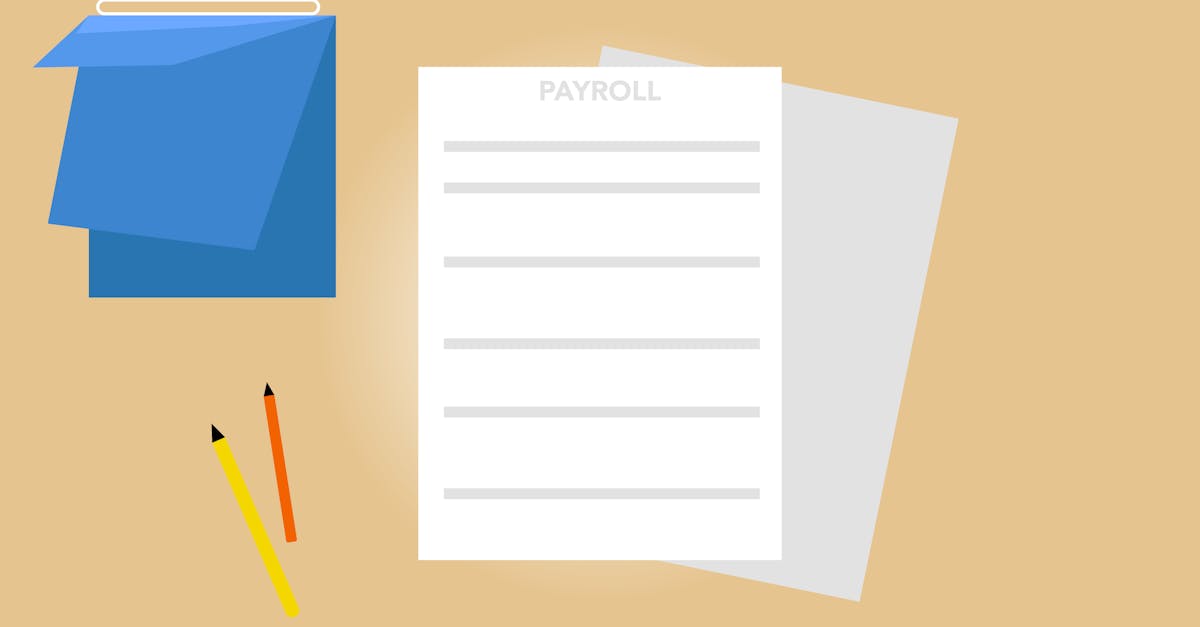
Introduction
One misplaced variable can turn an automated offer, invoice, or contract into an immediate privacy incident. From exposed Social Security numbers and bank details to internal notes showing up in customer‑facing PDFs, the ubiquity of dynamic documents means a single template mistake can cascade into regulatory headaches and lost trust. As teams rely more on template automation to scale communications, the number of places PII can surface—rendered PDFs, email bodies, cached previews, and logs—multiplies quickly.
This post gives practical, actionable guidance for colleagues in HR, compliance, and legal: how to detect and redact sensitive data at render time, implement template‑level controls like conditional fields and ephemeral tokens, choose secure rendering patterns (server vs client), and verify controls with testing and monitoring. Read on for concrete patterns, masking helpers, and integration options you can adopt today to keep PII out of outbound letters, contracts, and invoices.
Common PII risks when rendering dynamic templates (offers, invoices, agreements)
Key risks
-
Overexposure of sensitive fields: Fields like Social Security numbers, dates of birth, bank details, and health identifiers can be accidentally inserted into offers, invoice template automation, or contract emails when variable binding is incorrect.
-
Template injection and mis-binding: Unescaped variables or user-editable templates may allow unexpected data to render in the wrong place (for example an internal note appearing on a customer-facing invoice).
-
Residual data in cached/archived outputs: Rendered PDFs, email drafts, or cached HTML may retain PII long after it was needed.
-
Logging and telemetry leaks: Debug logs, error traces, or analytics exports may capture plain-text PII during template render or failures.
-
Third-party exposure: CDN previews, embedded images, or tracking pixels in marketing template automation can leak recipient identifiers or behaviors.
-
Conditional content errors: Misconfigured conditional fields can reveal data for the wrong recipient or reveal the existence of other parties (e.g., co-signer names in agreements).
Why this matters for automation
Dynamic template automation increases throughput and reusability of templates, but it also multiplies the places PII can surface—document template automation and email template automation workflows often render the same template across many recipients, increasing blast exposure risk.
Use the company privacy policy and consent patterns such as those in your privacy policy and authorization forms (for example: HIPAA authorization) to define what data is permitted in each template.
Techniques for automated PII detection and redaction at template render time
Detection approaches
-
Rule-based patterns: Use regex and deterministic rules for phone numbers, credit cards, SSNs, email addresses. These are fast and easy to implement for invoice template automation and most document template automation needs.
-
Named Entity Recognition (NER): ML models that detect names, locations, and organization names work well for free-text fields like offer letters or agreement clauses.
-
Hybrid pipelines: Combine regex + NER + whitelist/blacklist checks to reduce false positives and false negatives.
-
Data-type metadata: Leverage typed variables from template management systems (e.g., field declared as “ssn” or “bank_account”) to short-circuit detection and apply strict redaction rules.
Redaction strategies
-
Masking: Replace sensitive characters with asterisks (XXX-XX-1234). Good for invoices and offers where partial visibility is useful.
-
Tokenization/Hashing: Substitute with a reversible token or one-way hash when you need to link back to original PII in a secure store.
-
Omission: Remove the field entirely or replace with a context-specific placeholder when the PII is not required for the recipient.
-
Context-aware redaction: Use templates’ conditional logic to redact only when a recipient lacks permission to see the data.
Practical tips
-
Run detection as late as possible in the render pipeline (just before final output) to catch transformed or concatenated PII.
-
Log only redaction decisions and metadata, never raw PII. Store original PII in a controlled store if reversible tokenization is required.
Template-level controls: conditional fields, masking, and ephemeral variable tokens
Conditional fields
Design templates with explicit permission gates: each field should be annotated with required roles or consent scopes. During render, evaluate those conditions and default to safe placeholders when the condition fails.
Examples
-
Show full billing address only if billing_consent == true; otherwise show city/state only.
-
Include co-signer name only if co_signer_visible flag is set for this recipient.
Masking functions
Implement reusable masking helpers in your template engine (e.g., mask_ssn(), mask_card()) so authors don’t implement inconsistent rules. These helpers should be part of your template management library and called from the template itself.
Ephemeral variable tokens
Instead of embedding raw PII into output, inject ephemeral tokens that map to PII stored in a secure vault. Tokens expire after a short TTL and are useless if intercepted. This is particularly useful for document template automation that produces downloadable assets or for links in emails.
Implementations:
-
Issue a JWT-like token containing a minimal identifier and TTL, signed by your service.
-
Resolve the token at the access point (download service) which then fetches the PII behind access controls.
Secure rendering pipelines: client-side vs server-side rendering and encryption tradeoffs
Server-side rendering (SSR)
Pros: full control over data access, easier centralized logging and redaction, simpler to enforce policies for document template automation and invoice template automation. Cons: larger attack surface on the server and more responsibility for protecting PII at rest and in transit.
Client-side rendering (CSR)
Pros: reduces server storage of PII and can keep PII on devices if the client already has secure data. Useful for workflow template automation where the user’s browser composes or finalizes documents. Cons: harder to guarantee consistent redaction, increased risk if client environment is untrusted.
Encryption and token strategies
-
Transport and at-rest: Always use TLS in transit and strong encryption at rest for any PII-backed stores.
-
Field-level encryption: Encrypt particularly sensitive fields so even if rendered temporarily on a server, raw PII requires a key to read. This can be combined with ephemeral token resolution.
-
Edge rendering: Consider short-lived edge functions to do near-client rendering with limited access windows, balancing performance with reduced central exposure.
Tradeoffs
Choose SSR when you need strong, centralized redaction and consistent compliance enforcement. Choose CSR when minimizing server-side storage of PII is the priority and the client environment is trusted. Hybrid approaches—server-side redaction followed by client-side personalization—often hit the best balance.
Testing and monitoring: validate redaction rules, sample workflows and audit logs
Testing strategies
Use unit tests and template rendering tests that include both normal and adversarial data. Create a suite of template automation examples that intentionally include tricky PII patterns (concatenated numbers, international formats, embedded comments) to validate detection and masking.
Sample test cases
-
Render invoice with embedded notes containing an SSN-like pattern.
-
Produce contract where conditional logic should hide a co-signer; assert the co-signer’s name is not present in output.
-
Simulate failed token resolution to ensure tokens fail safe (do not leak PII).
Monitoring and audit logs
Log redaction decisions, token issuances, and template render metadata (who requested, which template, time). Ensure logs do not capture raw PII. Maintain an audit trail that maps rendered artifact IDs to tokens and decision metadata for compliance reviews.
Alerting and regression testing
-
Automate periodic scans of recently produced outputs using the same PII detection pipeline to catch regressions.
-
Set alerts for unusual patterns (spike in templates failing redaction checks, unusual templates used frequently).
Recommended templates and integration patterns to implement privacy-preserving rendering quickly
Recommended templates to standardize
-
Invoice template automation: Separate billing details partials and use masked defaults. For quick adoption, start with a versioned invoice template that always calls mask_card() and mask_account(). See a ready invoice pattern here: invoice template example.
-
Agreement/consent templates: Embed consent scopes and a link to your privacy policy. Keep sensitive clauses in server-rendered partials only.
-
Offer and marketing templates: Use marketing template automation best practices—no raw PII in tracking URLs and use ephemeral tokens for personalized downloads.
Integration patterns
1. Render-proxy pattern
Central render service accepts template ID and safe variable set, performs detection, applies masking/tokenization, then returns a signed artifact or ephemeral link. Useful for document template automation and ensures a single enforcement point.
2. Tokenization + vault pattern
Store PII in a vault. Templates receive tokens. When a user requests the rendered output, token resolves at an access-controlled service. This enables reversible access without embedding raw PII in artifacts.
3. Client-safe composition
Render public parts server-side; deliver placeholders and client-side fetches for personal data only after client authentication. Good for email template automation where the email body is safe but attachments are personalized.
Quick implementation steps
-
Pick or create versioned templates with annotated field metadata and standard masking helpers.
-
Integrate a detection/redaction library into the final render step and run it on every output.
-
Introduce ephemeral tokens for downloads and sensitive links.
-
Instrument audit logs for all render actions and automate periodic scans.
These patterns and templates help you rapidly adopt template automation while keeping PII protected and compliant. For hands-on examples of consent and authorization flows see your HIPAA authorization template and the linked privacy policy above.
Summary
When teams automate letters, contracts, and invoices, a single template mistake can become a costly privacy incident; this post walked through the practical controls you can apply right at render time—detection (regex/NER), consistent masking and tokenization, template‑level permission gates, and secure rendering patterns—to keep PII out of outbound artifacts. For HR and legal teams, these patterns make automation safer without slowing hiring, payroll, or contracting workflows: standardized masking helpers, conditional fields, and ephemeral tokens let you preserve necessary context while minimizing exposure. Adopt these controls as part of your template automation practice and start protecting outputs today — visit https://formtify.app to explore examples and implementation guides.
FAQs
What is template automation?
Template automation is the practice of generating documents or messages from reusable templates and dynamic variables to increase consistency and speed. When done securely it reduces manual work for HR and legal teams, but it also requires safeguards like redaction and tokenization to avoid accidental PII exposure.
How does template automation work?
Template automation binds variables (like names, addresses, or amounts) into a prebuilt layout at render time and can output email bodies, PDFs, or other artifacts. Secure implementations run PII detection and redaction in the final render step, use field metadata to enforce rules, and optionally substitute ephemeral tokens for sensitive data.
Can I automate templates in Word or Google Docs?
Yes — both Word and Google Docs support template automation through add‑ins, scripts, or API integrations that populate fields and export final artifacts. When using these tools, ensure you add redaction helpers or a centralized render step so PII isn’t unintentionally embedded in shared documents or cached previews.
Which tools support template automation?
Many platforms support template automation, from dedicated document automation services to CRM, payroll, and contract management systems that offer templating features. Choose tools that provide field metadata, extensible helpers (for masking/tokenization), and hooks for server‑side redaction to meet compliance needs.
What are common use cases for template automation?
Common uses include offer letters, employment contracts, invoices, receipts, and standardized customer communications that must be produced at scale. For HR and legal teams, automating these documents saves time and reduces errors — provided you layer in privacy controls like conditional fields and audit logging.





